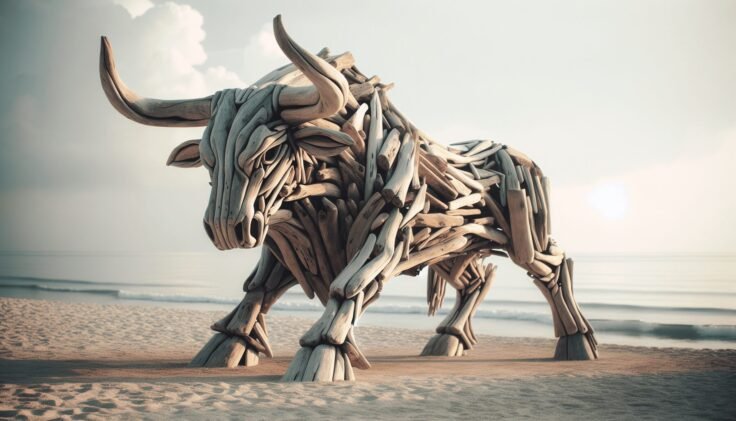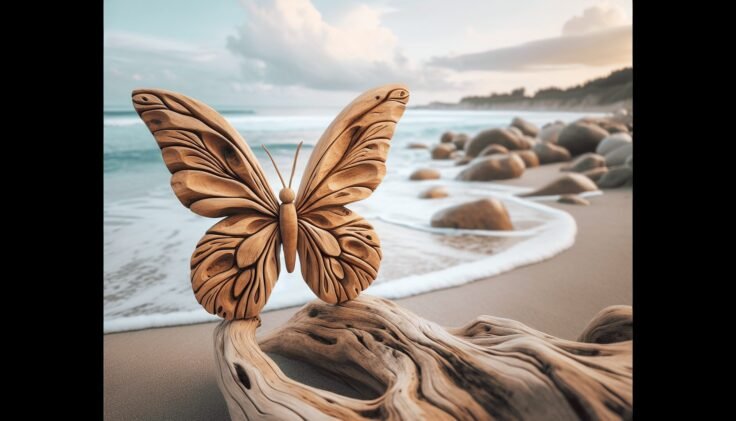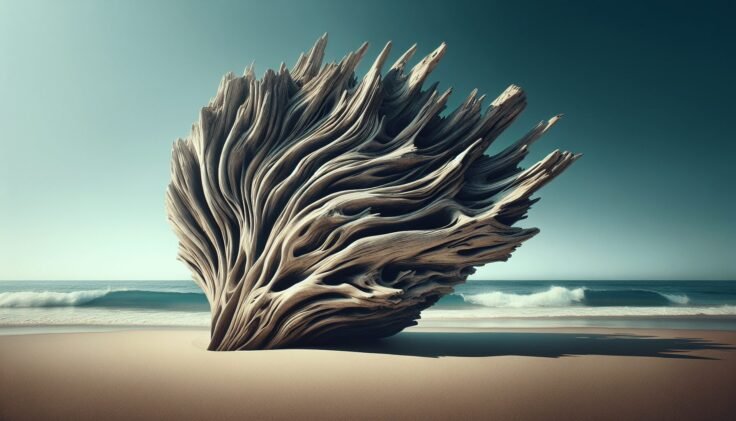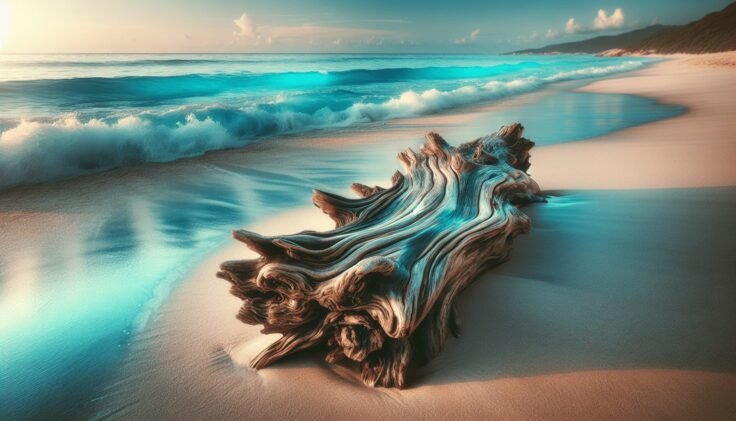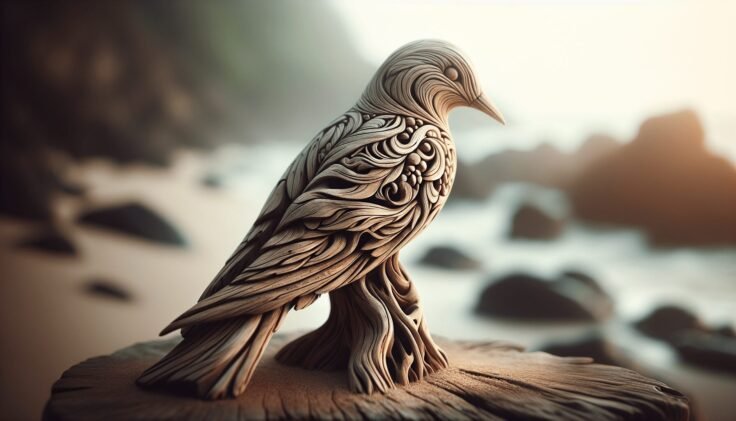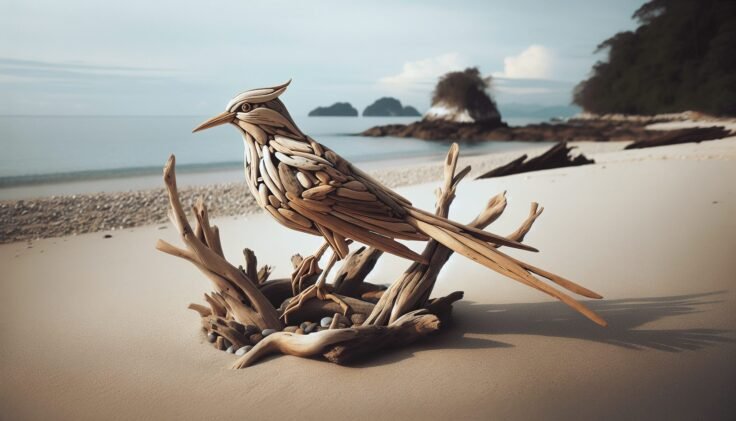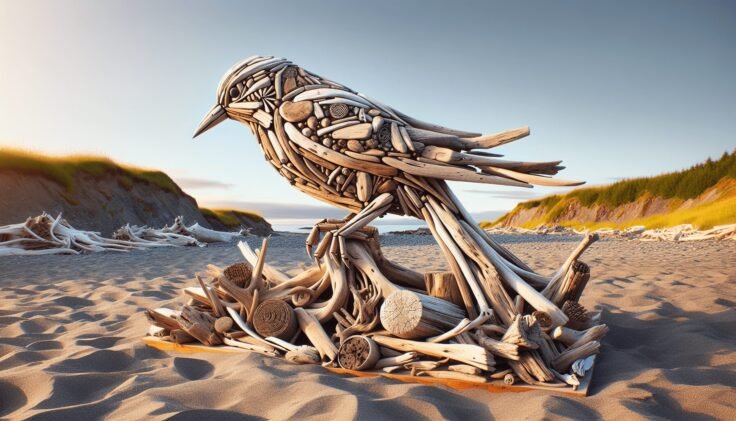Have you ever gazed at a piece of driftwood and been captivated by its unique shape and texture, pondering over the tales it might whisper about its journey? Now, imagine combining that rustic charm with the art of ceramics, creating pieces that hold the intrigue of the sea and the beauty of handcrafted art. This is the soul of Driftwood Ceramics, where nature and creativity harmoniously converge to produce amazing ceramic works.
The Beauty of Driftwood in Art
Driftwood, with its weathered aesthetic and unique textures, has been a subject of fascination for artists and creators across the world. Its organic shapes, worn surfaces, and the natural palette offer an unparalleled canvas that inspires creativity and innovation. You may wonder how driftwood, often seen washed ashore or floating along rivers, becomes a centerpiece in the art world. The transformation occurs when artists recognize its potential to evoke a connection to nature.
Driftwood’s Origin and Journey
To appreciate driftwood ceramics fully, it’s essential to understand where driftwood comes from and the journey it undertakes. Driftwood begins as a tree branch or trunk that falls into waterways. Over time, it’s carried along by currents and waves, often traveling vast distances. During this journey, the forces of nature sculpt it, stripping away bark and smoothing rough edges, resulting in its characteristic appearance.
Connection to the Natural World
Incorporating driftwood into art creates a tangible link between the creator, the piece, and the natural world. This connection can deepen your appreciation for the delicate balance of ecosystems and the beauty that emerges from nature’s processes. By using driftwood, artists pay homage to the journey and the earthy elegance it embodies.
Driftwood Ceramics: A Unique Fusion
Driftwood Ceramics marries the natural allure of driftwood with the skilled craftsmanship of ceramics, leading to a distinctive art form that captivates the eyes and stirs the soul. This fusion results in functional and decorative pieces that tell a story, highlighting raw materials’ elegance.
The Process of Creating Driftwood Ceramics
Creating driftwood ceramics involves a meticulous process that requires patience, skill, and a deep understanding of both driftwood and clay. The process begins with selecting the perfect piece of driftwood, which can take time as artists seek pieces with the ideal shape and character to inspire their work.
Next comes the clay, which is chosen based on its compatibility with the design envisioned. The clay is shaped and molded, often using the driftwood piece as a template or inspiration. This stage requires the artist to balance the organic form of the driftwood with the structured nature of the ceramics.
Once the clay and driftwood are prepared, they are often joined together, forming a cohesive piece that blends the two materials seamlessly. This step can involve intricate details, ensuring that the clay adheres to the driftwood in a way that appears natural and effortless. The final product is then fired, a process which solidifies the clay and enhances its durability.
Artistic Expression Through Driftwood Ceramics
Driftwood ceramics allows artists to express their individuality and creativity. Each piece is a one-of-a-kind work, with variations in driftwood and ceramics creating pieces that can never be perfectly replicated. This uniqueness is a considerable draw for collectors and enthusiasts who appreciate the rarity and originality of such art forms.
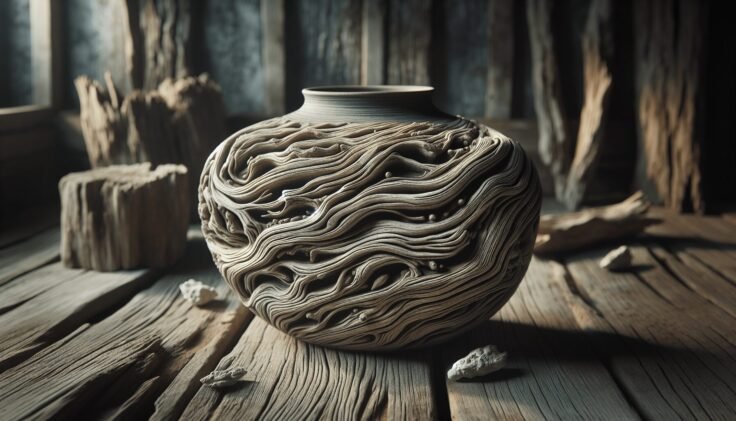
The Materials: Driftwood and Clay
To create truly remarkable driftwood ceramics, you need a deep understanding of the materials involved. Driftwood and clay are both versatile materials, each contributing its characteristics to the final piece.
Selecting the Right Driftwood
The selection of driftwood is a crucial step in the creation process. Artists look for pieces that tell a story through their shape, texture, and color. Factors such as the wood type, where it was found, and its journey through nature can influence its suitability for a piece of art.
Clay Choices for Ceramic Art
Unlike driftwood, which is found and chosen, clay is selected based on its properties. Different types of clay offer varied textures, colors, and firing requirements. Choosing the right clay is essential for creating a ceramic piece that complements the driftwood while maintaining structural integrity and aesthetic appeal.
Table: Common Types of Clay Used in Driftwood Ceramics
| Type of Clay | Characteristics | Ideal Use |
|---|---|---|
| Porcelain | Fine texture, smooth, strong, translucent | Best for delicate pieces with intricate designs |
| Stoneware | Dense, durable, refractory, varied in color | Suitable for functional items like bowls and vases |
| Earthenware | Porous, low firing temperature, earth tones | Used for decorative pieces with a rustic appeal |
Techniques for Incorporating Driftwood and Ceramics
Incorporating driftwood with ceramics requires skilled techniques that harmonize the two materials. These techniques vary based on the desired outcome and the properties of the materials used.
Sculptural Techniques
Sculptural techniques involve shaping and forming the clay to blend seamlessly with the driftwood. This can include carving, molding, or attaching pieces of clay to the wood. Sculptural works often aim to enhance the natural form of the driftwood, accentuating its curves and textures with designed ceramic additions.
Glazing and Firing
Glazing adds color and texture to the ceramics, enhancing their visual appeal and complementing the natural tones of the driftwood. The glazing process requires precision, as the colors can change during firing, especially when combined with organic materials like driftwood.
Firing the combined materials must be done carefully to avoid damaging the driftwood. Special kilns or low-temperature firings might be necessary to ensure the wood remains intact and the ceramics are properly cured.

Driftwood Ceramics in Modern Art and Decor
Driftwood ceramics hold a unique place in modern art and decor, offering a blend of natural and man-made elements that appeal to a wide range of tastes. These pieces can be both functional and decorative, adding a touch of nature’s elegance to any setting.
Driftwood Ceramics in Interior Design
Incorporating driftwood ceramics into your home can bring a sense of tranquility and elegance. The organic forms and earthy tones blend well with various decor styles, from minimalist to rustic, coastal to contemporary. These pieces can serve as focal points in a room or complement existing furnishings, adding depth and character.
Collecting Driftwood Ceramics
For collectors, driftwood ceramics offer a unique addition to any collection. Their rarity and individuality make them highly sought after collectibles. Each piece tells its own story, informed by the creator’s vision and the natural journey of the driftwood involved, making them not only decorative items but also rich in narrative and character.
Caring for Driftwood Ceramics
Maintaining the beauty of driftwood ceramics requires specific care techniques, given the materials involved.
Cleaning Techniques
Ensure you dust driftwood ceramics regularly using a soft, dry cloth to prevent build-up. For more thorough cleaning, a damp cloth can be used, but it’s important to avoid submerging the piece in water, as this could damage the wood.
Display and Preservation
When displaying driftwood ceramics, keep them out of direct sunlight to prevent fading or damage to both the wood and the ceramic components. Additionally, ensure they are placed in a stable environment, away from the risk of falls or knocks, which could cause breakage.
The Environmental Impact and Sustainability
Sustainability is a key consideration in the creation of driftwood ceramics. These pieces are not just beautiful; they can also promote environmentally-friendly practices in art.
Responsible Sourcing of Driftwood
Collecting driftwood responsibly is essential to maintaining balanced ecosystems. Ensure that driftwood is harvested in a way that does not disrupt local wildlife habitats or contribute to erosion. Many artists and suppliers emphasize responsible sourcing, which you might want to confirm when purchasing these pieces.
Eco-Friendly Ceramics
Using natural clay and sustainable glazing materials contributes to the creation of eco-friendly ceramics. Many artists focus on reducing their environmental footprint by choosing materials and processes that are as sustainable as possible, which is an important consideration if environmental impact is a concern for you.
Future Trends in Driftwood Ceramics
As trends in art and decor continue to evolve, driftwood ceramics are likely to retain their appeal thanks to their timeless beauty and connection to nature.
Technological Enhancements
Incorporating technology in the creation process, such as 3D printing and augmented reality, can open new avenues for artistic expression within driftwood ceramics. This tech infusion can enhance design possibilities and introduce new ways to appreciate these art forms.
Collaborations and Innovations
Collaborations between artists and designers continue to push the boundaries of what’s possible with driftwood ceramics. By combining diverse skills and perspectives, new techniques and styles emerge, enriching the field and expanding the appeal of these unique pieces.
Conclusion
Driftwood ceramics encapsulate an intersection of natural beauty and artistic craftsmanship, offering you a distinct way to appreciate the wonders of nature and human creativity. Whether you’re a collector, an artist, or simply someone who admires beautiful objects, driftwood ceramics can provide a connection to the earth and a testament to the skill of talented craftspeople. They remind us of the stories nature tells and the beauty that awaits discovery along every shore.



